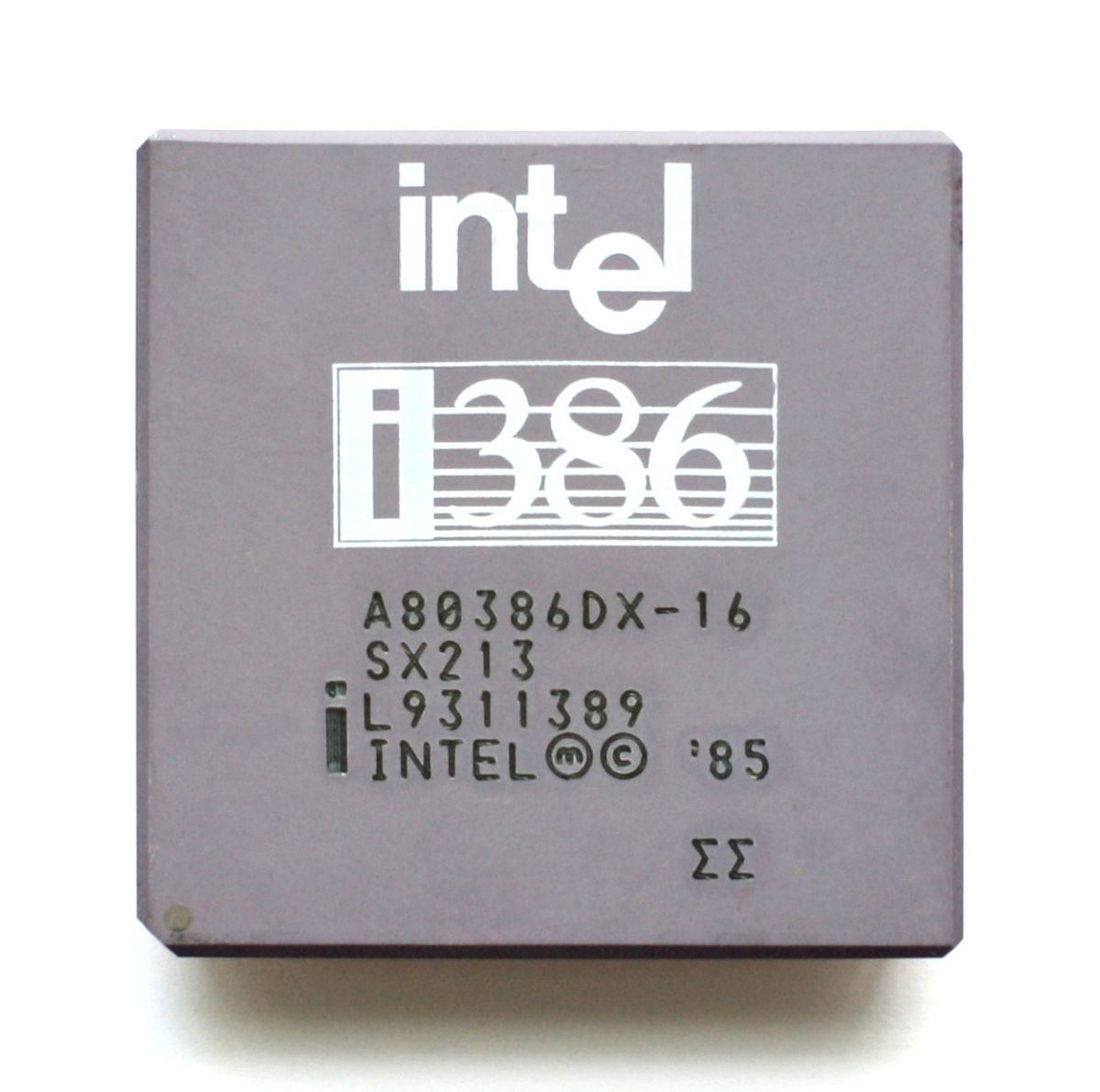EFI is so much better
GPT you mean. Linux can boot in a non-EFI machine that has GPT disk partitions… Windows can’t because it’s dumb.
Yes but by doing so you’re using the same principles as MBR boot. There’s still this coveted boot sector Windows will attempt to take back every time.
What’s nice about EFI in particular is that the motherboard loads the file from the ESP, and can load multiple of them and add them to its boot menu. Depending on the motherboard, even browse the ESP and manually go execute a .efi from it.
Which in turn makes it a lot less likely to have bootloader fuckups because you basically press F12 and pick GRUB/sd-boot and you’re back in. Previously the only fix would be boot USB and reinstall syslinux/GRUB.
I just had a bug on both of my EFI computers where they wouldn’t boot any more and a grub-install fixed it, apparently the regular update processes do not update the version on the ESP for some reason and my assumption is that it became incompatible with the modules in /boot
Adding an EFI Boot Entry for netboot.xyz after it happened on the first one really helped fix the second one though.
I’m not having an AI boot my computer!
GPT is a partitioning table. EFI is a bootloader firmware interface.
MBR is also a partitioning table.
It is also a boot sector aka Master Boot Record.
No I mean EFI. It is a much simpler than MBR.
Not sure if serious.
Not in my experience… and apparently a lot of people that dual boot 🤷.
My main boot partitions are far from the 2TB threshold of MBR, I’m not that rich.
Yeah cause that’s the only benefit 🙄
I can’t see any other really 🤷.
Never wanted more than three partitions?
Actually, it’s 4… and on one drive 🤨? No. I’ve always used a max of 2 on a drive.
With a swap partition and a split home directory, suddenly you don’t have enough partitions to dual boot
Yes you do, you just use subvolumes.
Start using and efistub and never worry about boot loaders again!
systemd-boot is a reasonable compromise. i like it
The reality is that a bootloader will seemingly always be needed to account for difficult BIOS’ and legacy setups (I’m looking at you, dual-booted Ubuntu 20.04).
Naah I just disable secure boot altogether, then you don’t have to worry about all that TPM security theatre.
You don’t need secure boot to use EFI. It’s better all around regardless of SB.
Fair enough I don’t miss the old BIOS.
Yeah, but Windows 11 needs it.
Can be disabled though. Easiest way - use Rufus when burning the USB.
Fun fact, you can also install Win11 in MBR mode, no UEFI needed whatsoever.
Ah yes, simplicity. MBR, with all its limitations had one killer feature: it was extremely simple.
UEFI, as powerful as it is, is the opposite of simple. Many moving parts, so many potential failure points. Unfortunately, it seems like modern software is just that: more complex and prone to failure.
Exactly why old devices are so hard to break - they’re incredibly simple.
To be honest, I see nothing wrong with MBR boot, it does the job, I’ll use it till I can or till it doesn’t do the job I want/need.
I work in IT for many years and I think your last sentence is very true. And is also why the industry is so lucrative haha
True, but… When MBR Grub drops to rescue or doesn’t appear at all, it’s not only difficult (at least for newbies) but somewhat random if you can actually boot a given OS. With EFI Grub, I’ve often managed to boot using BIOS boot override to launch a usable Grub configuration.
Actually grub 0.x series had much more useful rescue shell tab completion than the latest release. You could easily list all boot devices, partitions, and even filesystems and their contents. All from the rescue shell. Consequently, you could boot into Linux and reinstall grub in the MBR to fix it. All that without using a boot CD/USB! Good luck doing that with the latest version of grub and UEFI.
Also getting into the BIOS on legacy firmware was also very simple. On most machines it’s the three finger salute followed by either F1, Delete or rarely F11 or F12.
The boot process was simple, and the BIOS had just one simple task: load and execute the first 512 bytes of the disk that was designated as the boot device. That’s it.
Asus --> Del - Enter BIOS, F8 - Boot menu (very confusing since Windows also uses F8 for the recovery mode boot menu, so you have to press F8, then when the boot menu appears, chose the boot device, then have one hand on Enter and the other on F8 again, so that you hit Enter and start tapping like crazy on F8 to enter the rescue mode menu… annoying as hell)
GigaByte --> Del or F2 - Enter BIOS, F12 - Boot menu, Alt + F10 - Copy main BIOS to backup BIOS
MSI --> Del or F2 - Enter BIOS, F11 - Boot menu
ASRock --> Del or F2 - Enter BIOS, F11 or F10 - Boot menu
Biostar --> Del - Enter BIOS, F9 - Boot menu
Intel --> F2 - Enter BIOS, F10 or F12 - Boot menu
I used to remember some of the brand name PCs as well, but time has gotten the best of me 🤷.
The boot process was simple, and the BIOS had just one simple task: load and execute the first 512 bytes of the disk that was designated as the boot device. That’s it.
This is actually what I love about MBR nowadays. It’s simple enough so no one wants to mess with it and render the rig unbootable and obscure enough so no one (MS) actually checks if there is anything there that might trigger warnings (non-MS code).
You just fix grub with a live usb, it’s not that difficult.
“Not that difficult” but still more difficult than being able to boot without a separate live USB drive.
OK, I would agree with that.
Do we really ever fix the bootstrap, or does the bootstrap fix us?
Was upgrading Devuan and something happened with grub-update, could be my btrfs subvol setup?
Anyway a rescue boot, chroot and grub-update later, and it’s running great again.
I once fucked up my grub.cfg, wrote over the part needed to unencrypt. Had no idea what had happened. Was a fun night :)
This was probably before you used BTRFS, right? RIGHT?!?
I don’t know much about btrfs, how would that help ?
You can use snapshots. Like f up something, roll back a snapshot from an hour ago, all is good and dandy 😉.
Nuke the boot loader and burn your compiled code directly onto the bare metal the way the designers intended.
OK, how do we do that?
Gotta be real precise with a lighter
i prefer EFI, MBR breaks easily and dual booting with it is horrible
I have litelarly never broken MBR boot while dual booting and I have done it for at least a decade now. Windows updates and everything, not once has MBR boot been broken for me.
at least i wasnt able to install windows in my old computer again because the windows bootloarder keeped overwriting grub, and grub overwrited the windows bootloader, and os-prober didnt worked at all
You install Windows first, then Linux. Or install Windows, make an image, repartition, install Linux, whatever, then bring back the Windows image, just not the EFI partition or the MBR.
Unless you have two EFI partitions on different disks, the same breakage happens with EFI. I’ve had Windows wipe out Grub on multiple occasions.
Legit question. Outside of FOSS and a few more frames per second on some steam games, why would anyone go through the trouble of installing and configuring a Linux box? Last time I tried I couldn’t get my Bluetooth headphones to work and I had to buy a new webcam because I didn’t know how to compile drivers.
I sorta just accept I’m running a bit slower and everything works on my TinyPC win10 box.
I find the experience to be superior to Windows in every way, including driver support. And it gets more and more stark with every version of Windows.
Ten, you say? Is that still supported?.
It is, for now…
Nvidia drivers can be a hassle on Linux but on windows you need to use the Nvidia driver installer (as far as I know) with a gui and ads, so also a bad experience.
You can get 4 more years of support for Win10 if you really wanted with Win10 Enterprise LTSC 2019. It’s supported till 2029.
Microsoft wants 160€ for that…
I’m glad I use Linux.
There’s always KMS38 🤷.
Last time I tried I couldn’t get my Bluetooth headphones to work and I had to buy a new webcam because I didn’t know how to compile drivers.
When was that? 2002?
It wasn’t recent. I think it has to be at least 5 years ago.
The noname webcam I had was awesome. Had a bright LED when you’re on a call. This was before covid, so before all the webcam innovations. I could get the camera to engage but couldn’t get the LED to turn on.
I had to end up getting a Logitech webcam.
I fix my webcam issue by reinstalling Windows.
I would say convenience, my experience is that it just works, and then you get an OS you are fully in control of.
On Windows you sit down to do stuff and Windows needs to reboot and update, and you have already postponed it as long as you were allowed.
Yes there will always be some hardware that lacks Linux support, and the migration to Linux can be bumpy.
In my experience it usually doesn’t just work at first but after you get used to it and it’s fine. More importantly, if you have a problem you can find it and fix. If you’re not happy with how it looks, change it and if you don’t want companies spying on you, don’t install their software.
Also as someone that sometimes has to use windows I absolutely hate being forced to do updates, like come on I just wanted to turn it off and leave and then I have to wait 5 minutes for it to go through the update and boot again just to turn it back off because it can’t remember that I pressed the off and not reboot button.
FOSS is a really big reason to run Linux. In ten years you can trust that your Linux install will be running and up to date. In ten years there’s a non-zero chance Microsoft will have moved to a forced subscription model for Windows.
It also just runs faster, can fully update itself and all installed software with a few button clicks or one terminal command, and has tons of options for people who have more technical skill.
I cannot answer your question because it proceeds from an assumption I cannot related to. In my view, Linux is much easier to setup and I have immediate access to a huge software library and am immediately productive.
Installing Windows is much more of a hassle ( the licensing alone ) and, even once installed, you have a system that does nothing useful and needs much more time to install software on before accomplishing anything. Every time you turn around, it is throwing up arbitrary and artificial roadblocks.
Unless it is already installed, I personally cannot fathom why people would want to spend their time installing Windows.
Because large swaths of shit refuse to run on Linux
why would anyone go through the trouble of installing and configuring a Linux box?
It doesn’t cost any money and it doesn’t spy on you. It tends to be “lighter” than Windows, so it generally runs better on older hardware. It is easier to tweak and customize.
Hardware support and no ads on your desktop.
Hey, it works for you and that’s fine ☺️ 😉.
Hey, it works for you and that’s fine ☺️ 😉.
Be better for Humanity though if people supported corporations that made better products than those that made worse ones.
yeah, also microsoft does a lot of charity and, unlike Stallman, their executives wash their feet
I wouldn’t support any corp… cuz they all turn to shit sooner or later.
If you get used to the terminal, to connect your bluetooth headphones you turn on your bluetooth and type
bluetoothctlscan onit’ll scan and return devices by mac address, find yours, typepair [the mac address]connect [mac address]exitexitdone.I just switch my gaming rig to linux 3 or 4 months ago. First time daily driving linux. I haven’t touched a driver or anything system config related. I don’t think there is a single peice of hardware not working on my box. Im on pop_os! With an amd gpu. Can play any game thanks to steam proton or lutris. Playing wow and cyberpunk right now.
That’s awesome. Thanks for sharing. I honestly haven’t thought about drivers either. Sounds like outside of No ads and bloatware, which is completely removed with the Tiny11 build, I don’t see an advantage. At least not worth the trouble learning it.
AFAIK games generally still run worse on Linux, there are cases that seem to beat Windows performance, but I’m not kidding myself about that - it’s just not big enough of a difference to worry.
Aside from other reasons people are saying, I love my package manager. Having a centralized system where my stuff comes from and is installed, not having to deal with searching for websites, finding installers, and dealing with the bullshit they sometimes throw your way. And guess what, if something’s not available in the repositories, perhaps because it offers no installers in the first place, I can usually easily make my own build script and install it in the system anyways.
And then when it comes to updating my stuff, I also don’t have to deal with every program having its own updating/auto updating system, I just run a few commands and update everything I have installed.
And then when it comes to updating my stuff, I also don’t have to deal with every program having its own updating/auto updating system, I just run a few commands and update everything I have installed.
This is the best part for me… well, one of the best parts 😁.
When was that last time? In the last 5 years, except for brand new graphics cards, I’ve never had any hardware that didn’t simply work out of the box.
And for the first question, it works much better and breaks less often (these memes exaggerate for comedic effect, usually it’s rock solid), has much greater privacy, and it’s free.
Principle. I’m not interested in abusive relationships.
Honestly can’t remember the last time I had a bootoader issue. Don’t get me wrong, I’ve broken plenty of other things.
Windows 7 used to thunderfuck grub at random every few updates just to keep everyone on their toes.
Nice new verb you got there. Thunderfuck, indeed!
Did it stop after W7? I feel like it still does this at every opportunity, be that W10 or W11
UEFI boot is why this happens. In MBR, Windows doesn’t check or update the MBR magic, thus GRUB is left alone.
Installed in MBR mode 🤨? Cuz Win7 does support GPT, but not UEFI boot AFAIK.
Don’t remember choosing. Feel like uefi was new fangled at the time.
You don’t choose. If the installer boots in UEFI, it installs the OS in UEFI, if it boots in MBR, it installs in MBR. The same logic applies to both Windows and Linux.
I’ve been struggling with the boot loader for four days now and now my laptop boot loops and I can’t even access my primary OS (still windows) and can only access Ubuntu via flash drive. So yeah this meme is too fucking on.
Chroot into the main Ubuntu partition from the live USB and update GRUB.
I cant be the only person who noticed the Arch user dating a fury!?
I wouldnt go to bed either…oh yes “bootloader”.
If she called me to have sex… fuck the bootloader, there is always tomorrow.
No sex, only sleep.
I know, it was an alternative scenario 😁.
MBR is so easy to understand. UEFI, has so many things to understand EFI, ESP, MOK, signing procedures and signing chains, … it’s just so darn complicated.
- Disable secureboot
- Things just work
And in the end you just remove the need for a physical attacker to use whatever vulnerability there is in your EFI implementation anyway.
Things just work
Yeah, if you have only one OS. Or when you have more than one, but the other one doesn’t constantly try to fuck up the first one.
MBR is easy in this regard. Windows never touches the MBR magic, even when updating, so it’s all good. GRUB keeps the MBR in check, Windows doesn’t meddle, everything’s hunky dory in MBR boot land.
Windows never touches the MBR magic
I get you’re young from that statement alone.
I’m not (38). I should have been more precise, Windows doesn’t touch the MBR magic any more.
Yep. Plus, the less the firmware knows what you’re booting, the better.
Can’t relate to be honest, I have a life and use Fedora
Started using UEFI booting with secure boot. Much easier to fix and work with.




















